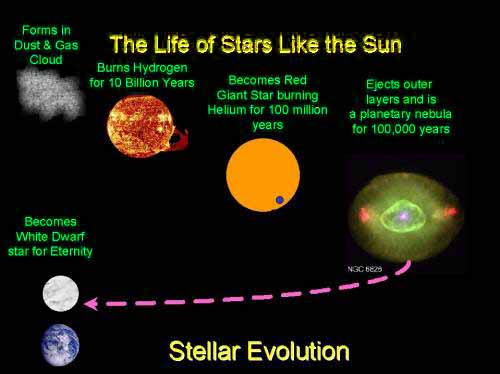High-Z Supernova Search
Table of ContentsThe Expanding Universe
The Fate of the Universe
Supernovae [1] [2] [3] [4] [5]
Type Ia Supernovae
Searching for Distant Type Ia Supernovae
Search Results
Search Conclusions
Supernovae
Supernovae are simply stars which explode. There is more than one way for a star to explode, and hence more than one type of supernovae. To understand supernovae, we need to understand stars.Stars form from clouds of gas and dust that collapse due to gravity until the material at the centre becomes hot and dense enough to start the fusion of Hydrogen to Helium. Stars spend most of their lives converting Hydrogen to Helium. The Sun, which formed about 4.7 billion years ago, began with enough gas to maintain a hydrogen fusion reaction for 10 billion years.
When hydrogen is exhausted, sun-sized stars commence the next stage of their lives - the fusion of Helium to Carbon and Oxygen. They become Red Giants, enormously swollen stars that glow hundreds of times more brightly than hydrogen fusing stars. Radiation presssure scatters large amounts of material into surrounding space. Eventually their Helium runs out and they reach their endpoints - white dwarfs enveloped in planetary nebulae. A white dwarf is the hot, dense, spent stellar core of a sun-sized star that has ceased fusion. It is about the size of Earth, but has the mass of the Sun. The planetary nebulat is is the cloud of gas stewn into space by the stellar wind of the dying star. It soon disperses and the white dwarf is left to cool for eternity.



